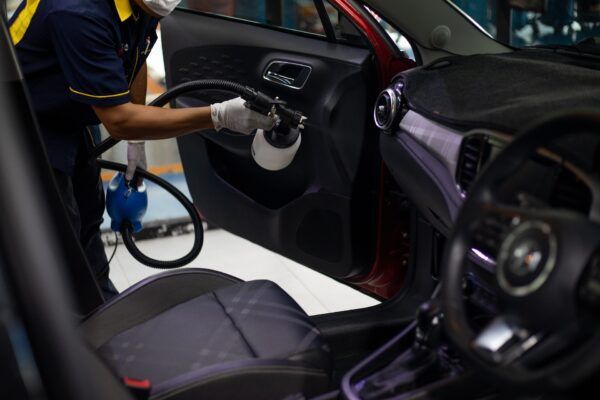
The automotive market is a dynamic landscape, constantly evolving with new models promising innovation, efficiency, and driving pleasure. However, the shiny exterior and appealing specifications don’t always tell the full story. For consumers investing a significant portion of their savings or committing to multi-year loans, understanding the true reliability and long-term satisfaction of a vehicle is paramount. The stakes are high, and making an uninformed decision can swiftly lead to a debilitating case of buyer’s remorse.
It’s a disheartening reality that some vehicles, despite their initial allure, frequently fall short of expectations, leaving owners grappling with persistent issues that range from minor inconveniences to catastrophic failures. From problematic transmissions and excessive oil consumption to critical battery defects and design compromises, the list of potential pitfalls is extensive. Learning from the experiences of other vehicle owners, and the detailed analyses of experts, is an invaluable strategy for making smarter purchasing decisions in today’s complex market.
In this in-depth guide, we delve into a collection of cars that, based on extensive feedback, expert reviews, and documented reliability concerns, have consistently left owners wishing they had chosen differently. Our aim is to provide clear, objective, and data-driven insights to help you navigate the automotive landscape and avoid those unfortunate choices that could turn your dream car into a financial and emotional headache. Let’s explore the first half of our list of vehicles that discerning buyers might do well to avoid.
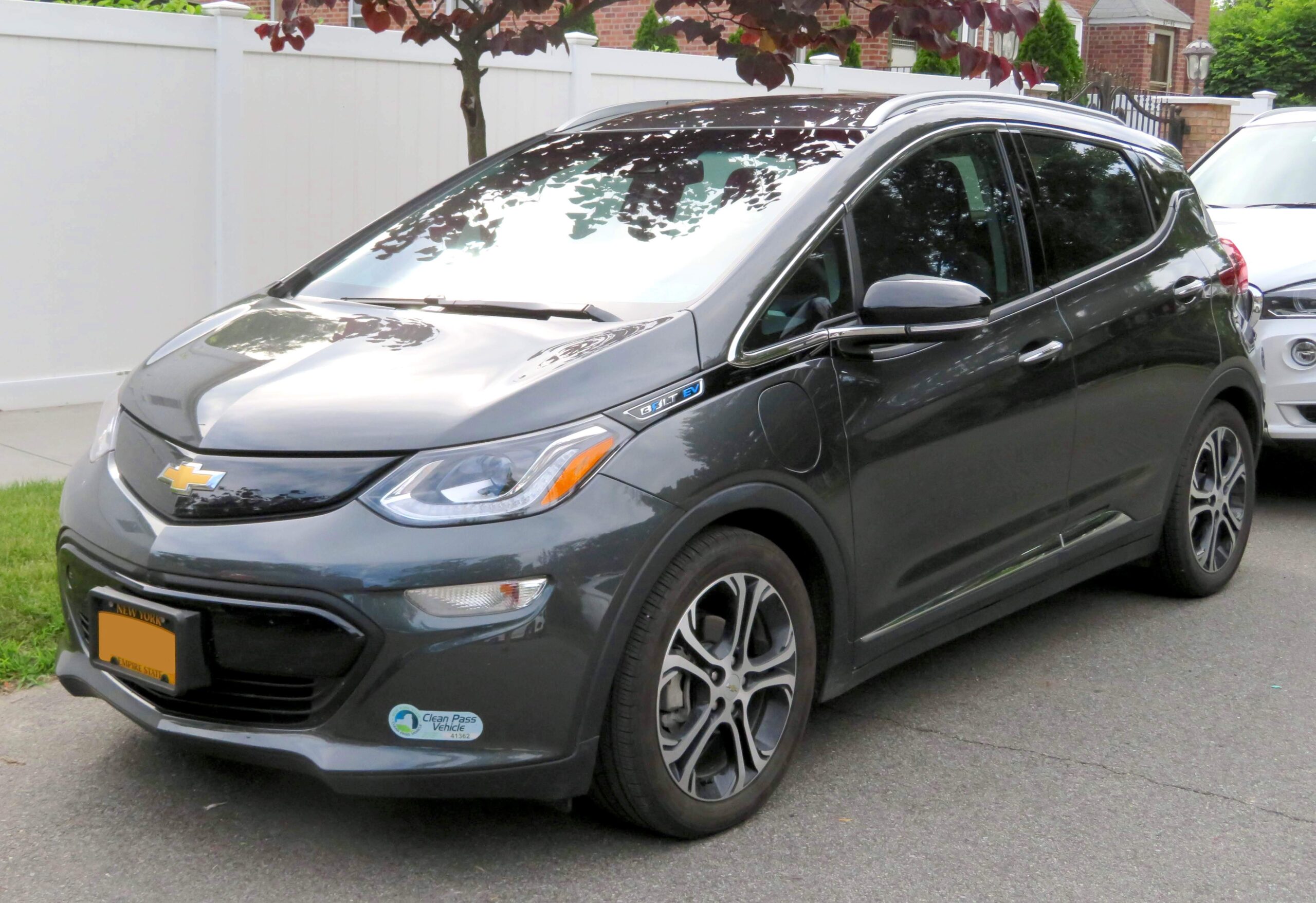
1. **Chevrolet Bolt**The Chevrolet Bolt, General Motors’ venture into the affordable electric vehicle market, initially garnered praise for its accessible price point and a respectable driving range. Yet, beneath this seemingly attractive façade, the Bolt has been plagued by a series of significant issues that have severely tarnished its reputation and led to widespread concern among owners. The most infamous and alarming problem revolved around the vehicle’s lithium-ion batteries.
These batteries, supplied by LG, were found to have manufacturing defects that could cause them to short-circuit, overheat, and, in severe cases, ignite into flames. This critical safety flaw necessitated massive, wide-ranging recalls in both 2020 and 2021, impacting numerous model years and causing considerable inconvenience and worry for thousands of owners. The financial and logistical burden of these recalls underscored the severity of the battery fire risk, making it a primary reason for potential buyer regret.
Beyond the perilous battery issues, the Bolt’s overall ownership experience has been described as somewhat unremarkable in other areas. Owners and reviewers often point to its ride quality, which is described as merely “so-so,” lacking the refinement and comfort found in many competitors. Furthermore, the space allocated for rear passengers is also considered “so-so,” potentially making longer journeys uncomfortable for adults. The handling characteristics of the vehicle similarly receive lukewarm assessments, failing to offer an engaging or particularly responsive driving dynamic.
These accumulated drawbacks, particularly the severe and widely publicized battery fire risks, present a compelling argument for caution when considering a Chevrolet Bolt. While its initial cost-effectiveness might seem appealing, the trade-off in potential safety hazards, coupled with an otherwise average driving experience and limited passenger comfort, positions it as a vehicle that has unfortunately let down many of its initial proponents. The long-term implications of such significant defects cast a shadow over its value proposition.
Car Model Information: 2021 Chevrolet Bolt EV FWD LT
Name: Chevrolet Bolt EV
Caption: 2022 Chevrolet Bolt EV
Manufacturer: General Motors
Production: unbulleted list
ModelYears: unbulleted list
Class: Subcompact car
BodyStyle: hatchback
Layout: Front-engine, front-wheel-drive layout
Predecessor: Chevrolet Spark EV
Categories: 2020s cars, All Wikipedia articles in need of updating, All articles containing potentially dated statements, All articles with unsourced statements, Articles containing potentially dated statements from February 2018
Summary: The Chevrolet Bolt EV (marketed in Europe as Opel Ampera-e) is a battery electric subcompact hatchback manufactured and marketed by General Motors under its Chevrolet brand from late 2016 until late 2023, with a brief hiatus between mid-2021 and early 2022.
The first-generation Bolt was developed and manufactured with LG Corporation. Sales of the 2017 Bolt began in California in December 2016; it was released nationwide and international markets release in 2017. A rebadged European variant was marketed as the Opel Ampera-e in mainland Europe. In 2017, the Bolt was the second-best-selling plug-in car in the United States. It was named the 2017 Motor Trend Car of the Year, the 2017 North American Car of the Year, an Automobile magazine 2017 All Star, and was listed in Time magazine’s Best 25 Inventions of 2016. The Ampera-e was discontinued after 2018. By the end of 2020, GM had sold 112,000 Bolt and Ampera-e cars worldwide. The first-generation Bolt had been subject to at least three recalls due to battery fire risks.
In mid-2023, GM officials said they would discontinue the Bolt; after outcry, they announced plans for a next-generation model, which is expected to be revealed in 2025 for model year 2026.
Get more information about: Chevrolet Bolt
Buying a high-performing used car >>>
Brand: Chevrolet Model: Bolt
Price: $15,961 Mileage: 51,715 mi.
Read more about: Buyer Beware: 14 Cars Notorious for Breaking Down Prematurely, Especially After 100,000 Miles
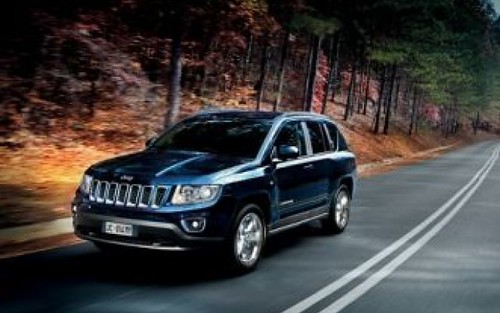
2. **Jeep Compass**A compact SUV, the Jeep Compass has become a frequent subject of owner complaints across various model years, presenting a stark contrast between its rugged appearance and its real-world reliability. Despite its confident stance and design suggesting adventure, many buyers have reported persistent and frustrating mechanical problems that significantly detract from its appeal. This makes it a vehicle often advised against for those seeking a smooth and trouble-free ownership experience.
One of the most commonly cited issues revolves around the vehicle’s transmissions. Both the continuously variable transmission (CVT) and the 9-speed automatic transmissions have been noted for experiencing “herky-jerky shifting” and, in more severe instances, “catastrophic failure.” Such transmission woes can lead to an uncomfortable and unreliable driving experience, requiring expensive repairs or replacements that quickly erode the perceived value of the vehicle. These transmission problems are a major source of “migraine headache on wheels” for many owners.
Beyond the significant transmission concerns, the Jeep Compass also suffers from a range of other performance and reliability issues. Owners have reported “poor engine performance,” indicating that the power delivery often feels inadequate for the vehicle’s size and segment expectations. “Excessive oil consumption” is another recurring complaint, signaling potential underlying engine problems that can lead to increased maintenance costs and operational concerns. Furthermore, “electrical system issues” contribute to the overall unreliability, causing various components to malfunction intermittently or completely.
The context also highlights that for the 2025 model, the Compass’s “reliability scores and owner satisfaction remain stubbornly low,” reinforcing the notion that these issues are not isolated to older models. It’s noted that it “combines premium pricing with underwhelming execution in key areas,” suggesting a mismatch between cost and quality, making it a questionable choice for anyone who actually wants a good SUV. Its off-road charm doesn’t compensate for its daily driving struggles.
For the 2024 model, it’s mentioned that “the 2.4-liter engine lacks the power and efficiency expected from a modern SUV” and the “nine speed automatic transmission often hesitates, leading to sluggish acceleration and subpar fuel economy.” The interior, too, is a “mixed bag of quality materials and cheaper plastics.” While the Compass may shine in off-road capabilities, it struggles to compete in daily driving, offering less comfort, efficiency, and reliability than other compact SUVs.
Car Model Information: 2020 Jeep Cherokee Latitude Plus
Name: Jeep Compass
Caption: 2019 Jeep Compass
Manufacturer: Jeep
Production: 2006–present
ModelYears: 2007–present
Class: Compact crossover SUV
BodyStyle: SUV
Layout: Front-engine, front-wheel-drive layout
Chassis: Unibody
Categories: 2010s cars, 2020s cars, All-wheel-drive vehicles, All Wikipedia articles written in American English, Articles with short description
Summary: The Jeep Compass is a compact crossover SUV, introduced in 2006 for the 2007 model year. The first generation Compass and Patriot, its rebadged variant, were among Jeep’s first crossover SUVs. The second-generation Compass debuted in September 2016 in Brazil and at the Los Angeles International Auto Show in November 2016, sharing a modified platform with the Renegade. It is positioned between the smaller Renegade and the larger Cherokee globally or the Commander in South America. The third-generation Compass debuted in May 2025, built on the STLA Medium by Stellantis, shared with other PSA Groupe vehicles.
Get more information about: Jeep Compass
Buying a high-performing used car >>>
Brand: Jeep Model: Compass
Price: $15,980 Mileage: 96,780 mi.
Read more about: Buyer Beware: 14 Cars Notorious for Breaking Down Prematurely, Especially After 100,000 Miles

3. **Nissan Sentra**The Nissan Sentra, a long-standing contender in the compact sedan market, presents a complex picture of reliability and owner satisfaction. While certain model years may offer a satisfactory experience, a significant period, specifically from 2013 to 2019, has been notoriously problematic, leaving a lasting impression of regret for many buyers. These particular years are largely associated with a troublesome transmission type that became a persistent thorn in the side of many Sentra owners.
The primary culprit during these problematic model years was Nissan’s infamous continuously variable transmission (CVT). This transmission type has been linked to a litany of issues including “overheating,” “jerky acceleration,” and noticeable “shuddering” during operation. These problems not only diminish the driving pleasure but also raise serious concerns about the transmission’s longevity and the potential for costly repairs. The inconsistent and often jarring driving experience associated with these CVTs made daily commutes far from smooth.
In addition to transmission woes, these Sentra models also faced other critical mechanical failures, such as “engine stalling,” which can be a significant safety concern and a major source of frustration. The list of issues was further compounded by numerous recalls related to essential safety components like “airbags,” “seatbelts,” and “brakes.” Such a comprehensive array of problems across multiple critical systems made the Sentra a particularly risky purchase during this period, contributing to widespread buyer dissatisfaction.
Looking ahead to the 2025 model, while some improvements have been made, the Sentra still struggles to impress. The “2.0-liter four-cylinder engine (with 149 hp) feels sluggish off the line,” and the “CVT tends to drone under acceleration, sounding like a vacuum cleaner struggling with a shag carpet.” This indicates a persistent lack of powertrain enthusiasm. Although it boasts a “clean dashboard design and surprisingly comfortable seats,” the “interior finishes are hit-or-miss” with a mix of soft-touch points and “cheap plastics.” The vehicle “rarely stands out in a crowded class” and is described as the “automotive equivalent of plain white toast,” suggesting it’s a generic option that doesn’t offer much in terms of driving satisfaction or modern refinement.
Car Model Information: 2021 Nissan Sentra SV
Name: Nissan Sentra
Caption: 2021 Nissan Sentra SR (B18; Canada)
Manufacturer: Nissan
Aka: Nissan Sunny
Production: 1982–present
Class: Subcompact car
Predecessor: Nissan Sunny#B310
Categories: 1990s cars, 2000s cars, 2010s cars, 2020s cars, All Wikipedia articles written in American English
Summary: The Nissan Sentra is a series of automobiles manufactured by the Japanese automaker Nissan since 1982. Since 1999, the Sentra has been categorized as a compact car, while previously it occupied the subcompact class. Until 2006, Sentra was a rebadged export version of the Japanese Nissan Sunny, but since the 2013 model year, Sentra is a rebadged export version of the Sylphy. The Sentra nameplate is not used in Japan. Many other countries in Latin America sell their versions of the Sunny as the Sentra. In Mexico, the first three generations of the Sentra were known as the Nissan Tsuru (Japanese for crane), and the B13 model was sold under that name until 2017, alongside the updated models badged as Sentra.
In North America, the Sentra currently serves as Nissan’s compact car, despite being rated as a mid-size car by the EPA due to its interior volume since the 2007 model year. While previous Sentras were subcompacts, the Sentra has grown over the years, with the Nissan Versa having replaced the Sentra in the entry-level area.
The Sentra name was created for Nissan by Ira Bachrach of NameLab, and Bachrach describes the origin as “Nissan wanted consumers to understand that it was quite safe even though it was small. The word Sentra sounds like central as well as sentry, which evokes images of safety.”
Get more information about: Nissan Sentra
Buying a high-performing used car >>>
Brand: Nissan Model: Sentra
Price: $17,961 Mileage: 63,553 mi.
Read more about: Buyer Beware: 14 Cars Notorious for Breaking Down Prematurely, Especially After 100,000 Miles

4. **Mitsubishi Mirage**The Mitsubishi Mirage stands out in the automotive landscape primarily for its exceptionally low price point, often positioning it as one of the last true “budget warriors” on the market. While its affordability might seem like a compelling advantage, particularly for those seeking basic transportation at the lowest possible cost, this economical approach comes with significant compromises across nearly every other aspect of the driving and ownership experience.
One of the most glaring deficiencies of the Mirage is its performance, or rather, its severe lack thereof. The “1.2-liter three-cylinder engine” is notoriously underpowered, producing a mere “78 hp.” This results in acceleration that can generously be described as “eventual,” making highway merging and even keeping up with city traffic a genuine challenge. Drivers often find themselves “checking their calendar to see if you make it to the next light,” which speaks volumes about its sluggish power delivery and the resulting frustration.
The interior of the Mirage is characterized by its extreme spartan design, where “no frills” appears to be the guiding principle. The extensive use of hard plastics and a general absence of modern amenities contribute to a cabin environment that feels dated and unrefined, even by budget car standards. While “Apple CarPlay is available,” the “overall infotainment setup is so far behind the curve, it’s practically in the last century,” suggesting a significant disconnect with contemporary expectations for in-car technology.
The context also highlights additional concerns for the 2024 model, including “poor crash-test ratings” and a “lack of many advanced safety features that are now standard in the industry.” This makes the Mirage a less than ideal choice for safety-conscious buyers, further diminishing its appeal despite its low price. Overall, while the Mirage is indeed “impressively efficient,” achieving close to “40 MPG on the highway,” this efficiency comes at the cost of “sacrificing every other driving pleasure,” leading to a driving experience that feels more like a “penalty than a perk,” and making it one of the “least refined, slowest, and most jarring on the market today.”
Car Model Information: 2023 Mitsubishi Mirage Ralliart
Name: Mitsubishi Mirage
Caption: Mitsubishi Mirage (sixth generation)
Manufacturer: Mitsubishi Motors
Production: 1978–2003,2012–present
Class: Subcompact car
Layout: Front-engine, front-wheel-drive
Predecessor: Mitsubishi Lancer (A70)
Successor: Mitsubishi Lancer#Eighth generation (2000)
Categories: 1980s cars, 1990s cars, 2000s cars, 2010s cars, 2020s cars
Summary: The Mitsubishi Mirage is a range of cars produced by the Japanese manufacturer Mitsubishi from 1978 until 2003 and again since. The hatchback models produced between 1978 and 2003 were classified as subcompact cars, while the sedan and station wagon models, marketed prominently as the Mitsubishi Lancer, were the compact offerings. The liftback introduced in 1988 complemented the sedan as an additional compact offering, and the coupé of 1991 fitted in with the subcompact range. The current Mirage model is a subcompact hatchback and sedan and it replaces the Mitsubishi Colt sold between 2002 and 2012.
Get more information about: Mitsubishi Mirage
Buying a high-performing used car >>>
Brand: Mitsubishi Model: Mirage
Price: $16,980 Mileage: 11,832 mi.
Read more about: Road Warriors: 15 Compact Cars That Will Conquer 260,000 Kilometers Without a Hiccup

5. **Hyundai Kona Electric**Hyundai has garnered significant attention for its innovative and well-received electric vehicles in recent years. However, not every EV launched by the manufacturer has been without its share of serious setbacks. The Hyundai Kona Electric, despite its promising position in the burgeoning electric vehicle market, has unfortunately earned a place on this list due to a critical and alarming issue that mirrored problems seen in other early EVs.
The primary and most concerning flaw with the Hyundai Kona Electric has been its propensity for “battery fires.” This severe safety risk led to substantial “worldwide recall[s] in 2020 and 2021” as the carmaker scrambled “to nip the fire risks in the bud by replacing battery packs in affected EVs.” Such a widespread and critical recall highlights a fundamental issue with the vehicle’s core power component, leading to significant owner apprehension and a major blow to its reliability perception.
The fact that the manufacturer had to replace entire battery packs in affected vehicles underscores the seriousness of the defect, going beyond minor software updates or component fixes. This not only created logistical challenges for owners but also instilled a deep sense of distrust regarding the vehicle’s long-term safety and dependability. The inconvenience and uncertainty associated with these battery-related fire risks are substantial enough to deter potential buyers.
Furthermore, the context explicitly states that “the battery issues are just the tip of the iceberg” when it comes to the Kona Electric’s problems, with a stark “Buyer beware!” warning attached. While the provided information doesn’t detail other specific issues beyond the battery, this phrase suggests a broader pattern of potential concerns that could contribute to an unsatisfactory ownership experience. For an electric vehicle, where the battery is the battery is the heart of the system, such severe and unresolved issues make the Kona Electric a problematic choice, despite Hyundai’s broader success in the EV segment.
Car Model Information: 2025 Genesis GV80 3.5T
Name: Hyundai Kona
Caption: Hyundai Kona N Line (SX2)
Manufacturer: Hyundai Motor Company
Aka: Hyundai Kauai (Portugal)
Production: 2017–present
ModelYears: 2018–present
Class: Subcompact crossover SUV
BodyStyle: SUV
Layout: ubl
Categories: 2020s cars, All-wheel-drive vehicles, All Wikipedia articles in need of updating, All Wikipedia articles written in British English, Articles containing Chinese-language text
Summary: The Hyundai Kona (Korean: 현대 코나) is a subcompact crossover SUV produced by the South Korean manufacturer Hyundai. The first-generation Kona debuted in June 2017 and the production version was revealed later that year. It is positioned between the Venue or Bayon and the Tucson in Hyundai crossover SUV line-up. The battery electric version called the Kona Electric (or Kona EV) was first launched in South Korea during the first half of 2018 and rolled out gradually worldwide afterwards.
Get more information about: Hyundai Kona
Buying a high-performing used car >>>
Brand: Hyundai Model: Kona Electric
Price: $63,683 Mileage: 5,413 mi.
Read more about: Car Subscription Services: A Comprehensive Review to Determine Their Value and Fit for Your Lifestyle

6. **Dodge Grand Caravan**For many families, the Dodge Grand Caravan has historically served as a familiar, if not always cherished, mode of transportation, ferrying children, pets, and belongings over countless miles. While these minivans may hold nostalgic memories for some, their actual driving and ownership experience, particularly in later model years, has often been far from “smooth driving,” leading to significant frustration and regret among owners.
A pervasive and critical complaint lodged against the Dodge Grand Caravan centers on “transmission failure.” This is a profoundly serious issue for any vehicle, especially one marketed as a reliable family hauler. Before outright failure, many owners report experiencing a range of other transmission problems, including “delayed gear engagement,” “rough shifting,” and “slipping.” These symptoms not only make the driving experience uncomfortable and unpredictable but are also clear indicators of an impending and costly mechanical breakdown.
The unreliability of the transmission directly undermines the Grand Caravan’s utility as a family vehicle, making it difficult for owners to trust it for daily commutes or long-distance travel. Such issues require frequent and expensive visits to the repair shop, turning what should be a practical purchase into a financial drain. The context explicitly states, “It’s hard to rely on a Dodge Grand Caravan as a family, pet, and thing hauler when transmission failure is a common complaint from owners.”
In addition to these severe transmission problems, owners also commonly voice concerns about “electrical system problems,” which can manifest in various frustrating ways, from malfunctioning accessories to critical system failures. “Heavy oil consumption” is another recurring issue, indicating potential engine wear or design flaws that contribute to increased running costs and maintenance demands. Reflecting on these extensive issues, many owners reportedly wish they “could rewind time and have a do-over,” emphasizing the depth of their dissatisfaction and the profound regret associated with their purchase.
Car Model Information: 2025 Genesis GV80 3.5T
Caption: 2011 Dodge Grand Caravan Mainstreet
Name: Dodge Grand Caravan
Manufacturer: Chrysler Corporation,Daimler AG,Chrysler LLC,Chrysler Group LLC,FCA US LLC
Class: Minivan
Layout: FF layout,F4 layout
Production: November 2, 1983 –August 21, 2020
ModelYears: 1984–2020
Related: Plymouth Voyager,Chrysler Town & Country (minivan),Dodge Mini Ram,Chrysler Voyager,Volkswagen Routan
Assembly: Windsor, Ontario,Fenton, Missouri,Fenton, Missouri,Fuzhou
Successor: Dodge Journey,Chrysler Voyager
Categories: All-wheel-drive vehicles, All articles with unsourced statements, Articles with short description, Articles with unsourced statements from December 2017, Articles with unsourced statements from May 2009
Summary: The Dodge Caravan is a series of minivans manufactured by Chrysler from the 1984 through 2020 model years. The Dodge version of the Chrysler minivans, was marketed as both a passenger van and a cargo van (the only version of the model line offered in the latter configuration). For 1987, the model line was joined by the long-wheelbase Dodge Grand Caravan. Produced in five generations across 36 model years, the Dodge Caravan is the second longest-lived Dodge nameplate (exceeded only by the Dodge Charger). Initially marketed as the Dodge counterpart of the Plymouth Voyager, the Caravan was later slotted between the Voyager and the Chrysler Town & Country. Following the demise of Plymouth, the model line became the lowest-price Chrysler minivan, ultimately slotted below the Chrysler Pacifica.
Sold primarily in the United States and Canada, the Dodge Caravan was also marketed in Europe and other international markets under the Chrysler brand (as the Chrysler Voyager or Chrysler Caravan). From 2008 onward, Dodge marketed the model line only as the Grand Caravan; Ram Trucks sold a cargo-only version of the model line as the Ram C/V Tradesman. The model line was also rebranded as the Volkswagen Routan from 2009 through 2014.
After the 2020 model year, the Dodge Grand Caravan was discontinued, ending production on August 21, 2020. For 2021 production, the Grand Caravan nameplate was moved to Chrysler, which used it for a Canadian-market version of the Chrysler Pacifica (in the United States, the exact vehicle was marketed as the Chrysler Voyager).
For its entire production run, the Dodge Caravan/Grand Caravan was manufactured by Chrysler Canada (now Stellantis Canada) at its Windsor Assembly facility (Windsor, Ontario). From 1987 until 2007, the model line was also manufactured by Chrysler at its Saint Louis Assembly facility (Fenton, Missouri). Since their introduction in late 1983, over 14.6 million Chrysler minivans have been sold worldwide (including export versions and versions sold through rebranding).
Get more information about: Dodge Caravan
Buying a high-performing used car >>>
Brand: Dodge Model: Grand Caravan
Price: $63,683 Mileage: 5,413 mi.
Read more about: Buyer Beware: 12 Cars That Will Cost You a Fortune Before You Hit 50,000 Miles
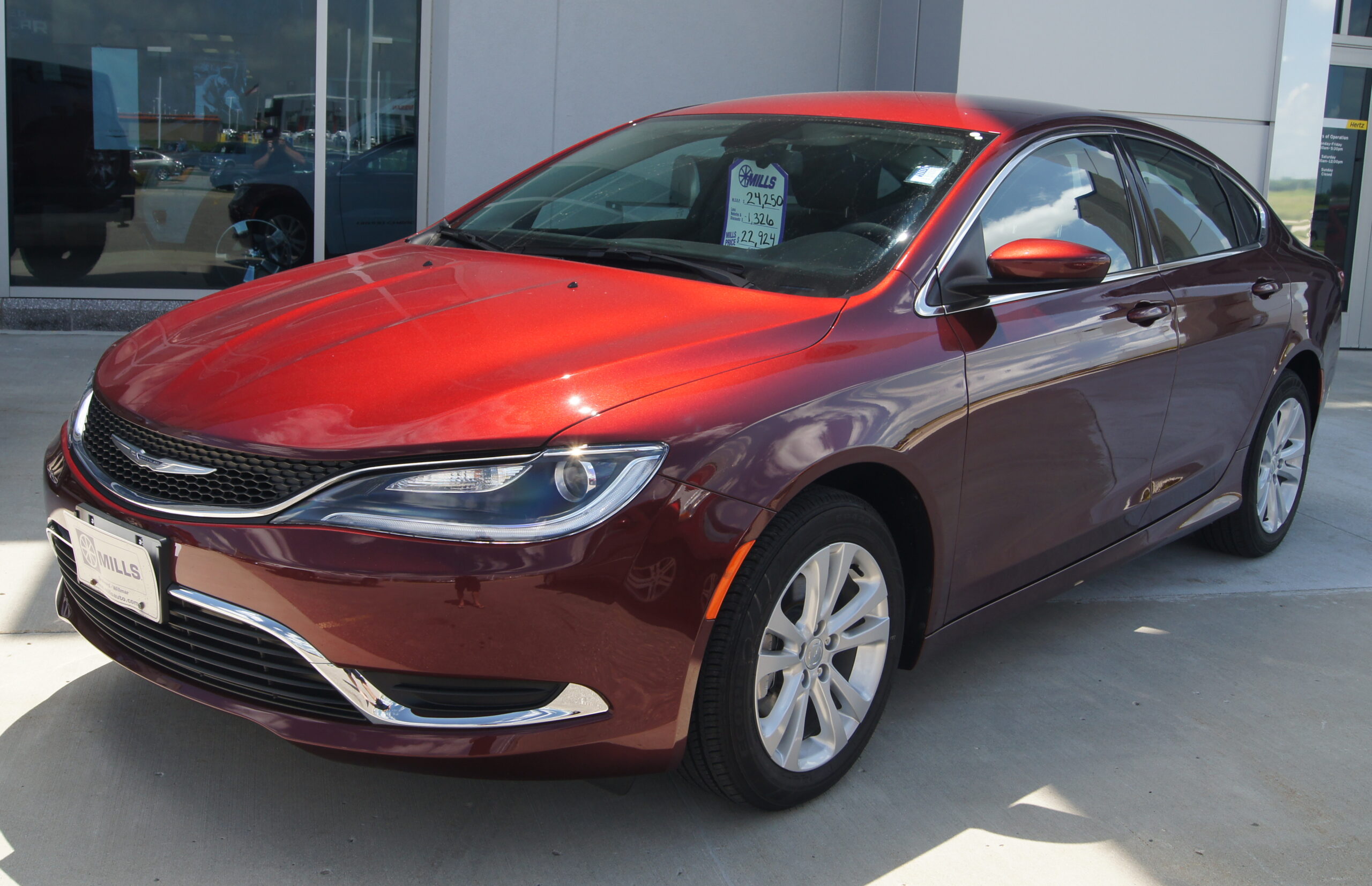
7. **Chrysler 200**The Chrysler 200, manufactured between 2011 and 2017, was an attempt by Chrysler to offer a competitive mid-size sedan, but it ultimately became synonymous with a host of reliability issues that left many owners deeply unsatisfied. This vehicle is frequently cited as a prime example of a car that failed to deliver on promises of quality and dependability, particularly in its later model years.
A major source of frustration for Chrysler 200 owners, especially those with the 2015, 2016, and 2017 models, was the “9-speed automatic tranny.” This particular transmission proved “to be especially problematic,” leading to widespread complaints. The problems were not minor; the context explicitly states that “transmission failure was a thing, too,” indicating that owners were not just dealing with rough shifts but with complete mechanical breakdowns that necessitated costly repairs or replacements.
Beyond the severe transmission troubles, the Chrysler 200 also “suffers from engine performance problems.” These issues can manifest as a lack of power, rough idling, or other irregularities that detract from the driving experience and raise concerns about the engine’s long-term health. When a vehicle’s primary powertrain components—both the engine and the transmission—are consistently problematic, it fundamentally compromises its reliability and overall value proposition.
These accumulated reliability issues paint a clear picture of a vehicle that struggled to meet basic standards of dependability. For a car that was meant to be a mainstream sedan, the frequent and severe mechanical failures, especially concerning its most vital systems, made it a source of constant headaches and unexpected expenses for its owners. The consistent reporting of these problems across multiple model years cements the Chrysler 200’s reputation as a car many regret purchasing.
Continuing our exploration of vehicles that have unfortunately led to widespread buyer’s remorse, we now turn our attention to another segment of the market where design, performance, and reliability issues have frequently overshadowed initial appeal. Understanding these recurrent problems across various models is crucial for consumers aiming to make a truly informed purchase, safeguarding against the financial and emotional toll of a regrettable automotive investment. These insights, gleaned from owner experiences and expert analyses, serve as a vital guide in navigating today’s complex automotive choices.
Car Model Information: 2013 Chrysler 200 Touring
Name: Chrysler 200
Manufacturer: Chrysler
Production: 2010–2016
ModelYears: 2011–2017
Assembly: Sterling Heights, Michigan
Class: Mid-size car
Sp: us
Predecessor: Chrysler Sebring
Categories: 2010s cars, All articles with dead external links, All articles with unsourced statements, Articles with dead external links from July 2020, Articles with permanently dead external links
Summary: The Chrysler 200 is a mid-size sedan that was manufactured and marketed by Chrysler from model years 2011 to 2017 across two generations in four-door sedan and two-door convertible (first generation only) body styles.
The 200 nameplate debuted on the 200C, a prototype hybrid vehicle shown at the 2009 North American International Auto Show in Detroit and based on the Chrysler 300. The 200C concept was engineered to accept either traditional gasoline, hybrid or full-electric powertrains.
Get more information about: Chrysler 200
Buying a high-performing used car >>>
Brand: Chrysler Model: 200
Price: $7,995 Mileage: 117,030 mi.
Read more about: Buyer Beware: 14 Cars Notorious for Breaking Down Prematurely, Especially After 100,000 Miles
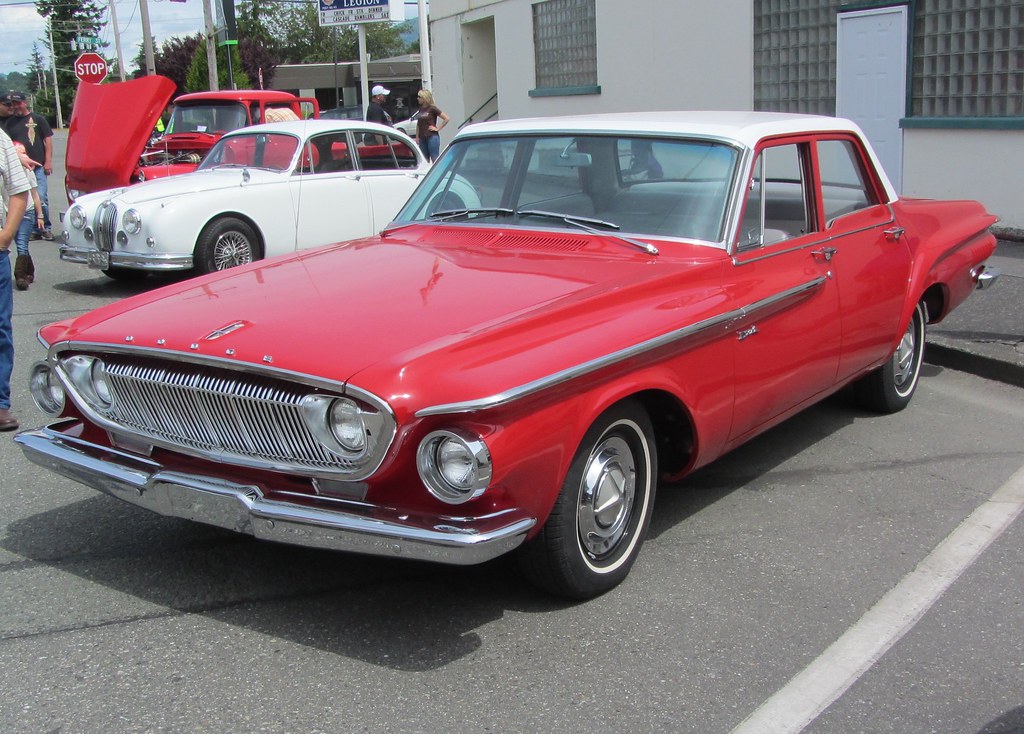
8. **Dodge Dart**The Dodge Dart, despite its compact sedan classification, unfortunately earned a reputation for harboring problems typically associated with larger, more complex vehicles. This disparity between its segment and its operational issues left many owners questioning their decision. It’s not merely one isolated system that draws criticism; rather, the Dart presents a comprehensive array of faults across its fundamental components.
From the intricacies of its transmission to the core functionality of the engine, and extending to the crucial areas of suspension and braking systems, this vehicle has consistently underperformed. Such a broad spectrum of issues creates a challenging ownership experience, transforming what should be a straightforward compact car into a source of ongoing mechanical headaches. This holistic unreliability makes the Dodge Dart a car many owners explicitly state they wish they had never purchased.
Reinforcing these concerns, Consumer Reports data indicates a significant level of dissatisfaction among its owners. According to their findings, approximately six out of every ten buyers reported being unhappy with their Dodge Dart. This high percentage of regret speaks volumes about the vehicle’s persistent shortcomings and its failure to meet basic expectations for dependability and driving satisfaction.
Car Model Information: 2015 Dodge Dart SXT
Name: Dodge Dart
Caption: 1966 Dodge Dart GT 2-door hardtop
Manufacturer: Dodge
Production: 1959–1976 (US market)
ModelYears: 1960–1976 (US market)
Class: Full-size
Layout: FR layout
Predecessor: Dodge Coronet#Fourth generation (1957–1959)
Related: Plymouth Valiant,Chrysler Valiant,Dodge Phoenix
Successor: Dodge Aspen,Dodge Diplomat,Talbot Tagora
Categories: 1970s cars, All articles with unsourced statements, Articles with short description, Articles with unsourced statements from December 2023, Articles with unsourced statements from May 2025
Summary: The Dodge Dart is a line of passenger cars produced by Dodge from the 1959 to 1976 model years in North America, with production extended to later years in various other markets.
The production Dodge Dart was introduced as a lower-priced full-size model in 1960 and 1961, but became a mid-size car for one model year for 1962, and was then reduced to a compact for two generations, from 1963 to 1976.
Chrysler had first used ‘Dart’ name plates on two Italian styled show cars, in 1956 and 1957, before it became a Dodge model name. The Dart nameplate was resurrected for a Fiat-derived compact car that was introduced in 2012.
Get more information about: Dodge Dart
Buying a high-performing used car >>>
Brand: Dodge Model: Dart
Price: $9,995 Mileage: 143,082 mi.
Read more about: Remembering Motorsport Icons: A Tribute to Personalities We Lost This Year

9. **Nissan Altima**The Nissan Altima, a popular choice in the mid-size sedan category, has similarly found its way onto lists of vehicles that owners frequently regret purchasing. A recurring theme of dissatisfaction centers around its transmission, a component critical to any vehicle’s smooth operation and longevity. For the Altima, this often means confronting the notoriously problematic continuously variable transmission (CVT).
The most severe manifestations of the Altima’s CVT issues were prominently observed in model years spanning from 2013 to 2019. During this period, owners reported a litany of complaints, ranging from erratic behavior to outright failures that significantly impacted the driving experience. Such transmission woes not only disrupt daily commutes but also signal costly repair bills, eroding the car’s perceived value.
Beyond its transmission concerns, the Nissan Altima has faced other significant reliability challenges. Owners have consistently reported problems with the steering system, which can compromise handling precision and driver confidence. Furthermore, issues such as excessive oil consumption and persistent oil leaks are frequently cited. These problems indicate potential engine health issues, adding to the vehicle’s maintenance burden and overall unreliability.
Car Model Information: 2023 Nissan Altima SR FWD
Name: Nissan Altima
Caption: 2024 Nissan Altima SR (L34; US)
Manufacturer: Nissan
Aka: Nissan Bluebird
Production: 1992–present
Class: Compact car
Predecessor: Nissan Bluebird,Nissan Stanza
ModelYears: 1993–present
Categories: 2000s cars, 2010s cars, 2020s cars, All-wheel-drive vehicles, All Wikipedia articles written in American English
Summary: The Nissan Altima is a mid-size car manufactured by Nissan since 1992. It is a continuation of the Nissan Bluebird line, which began in 1955.
The Altima has historically been larger, more powerful, and more luxurious than the Nissan Sentra but less so than the Nissan Maxima. The first through fourth-generation cars were manufactured exclusively in the United States and officially sold in North and South America, along with the Middle East and Australia. For other markets, Nissan sold a related mid-size sedan called the Nissan Teana which was between the Altima and Maxima in terms of size. In 2013, the Teana became a rebadged version of the fifth-generation Altima.
The name “Altima” was originally applied to a top trim line of the Nissan Leopard for the Japanese market in 1986, and then to the Nissan Laurel Altima mid-size car sold in Central America and the Caribbean before 1992. In 1992, Nissan discontinued the Stanza which was a Nissan Bluebird clone, replacing it with the US-built Altima, while remaining a compact car. The first Altima was produced in June 1992, as a 1993 model. All Altima models for the North American market were built in Smyrna, Tennessee, until June 2004, when Nissan’s Canton, Mississippi plant also began producing the model to meet high demand.
Get more information about: Nissan Altima
Buying a high-performing used car >>>
Brand: Nissan Model: Altima
Price: $23,999 Mileage: 26,080 mi.
Read more about: Buyer Beware: 14 Cars Notorious for Breaking Down Prematurely, Especially After 100,000 Miles

10. **Nissan Versa Note**The Nissan Versa Note positioned itself as a highly affordable small hatchback, appealing to buyers primarily driven by price point. However, the context clearly indicates that this low price tag often directly correlated with the vehicle’s overall quality level. For many owners, the initial savings quickly evaporated when confronted with persistent operational issues.
A significant source of frustration for Versa Note owners revolved around its continuously variable transmission (CVT). This transmission type, similar to issues found in other Nissan models, consistently proved problematic, leading to an unsatisfactory driving experience. The constant issues with the CVT became a primary reason for owner discontent, highlighting a critical flaw in the vehicle’s design and engineering.
Compounding the transmission problems was the Versa Note’s anemic acceleration. Powered by a 1.6-liter four-cylinder engine, the vehicle often struggled to deliver adequate power, making merges onto highways or even keeping pace with city traffic a sluggish endeavor. This lack of responsiveness, coupled with the transmission woes, contributed to a driving experience that many owners found to be notably disappointing and frustrating.
Car Model Information: 2025 Genesis GV80 3.5T
Categories: All set index articles, Articles with short description, CS1 Mexican Spanish-language sources (es-mx), CS1 Portuguese-language sources (pt), CS1 Spanish-language sources (es)
Summary: Nissan Versa is an automobile nameplate used by the Japanese manufacturer Nissan in the Americas for the following models:
According to a Nissan press release in 2008, “versa” is short for “versatile space” meant to imply the spaciousness of the interior and configurable cargo arrangements.
Get more information about: Nissan Versa
Buying a high-performing used car >>>
Brand: Nissan Model: Versa Note
Price: $63,683 Mileage: 5,413 mi.
Read more about: Buyer Beware: 14 Cars Notorious for Breaking Down Prematurely, Especially After 100,000 Miles
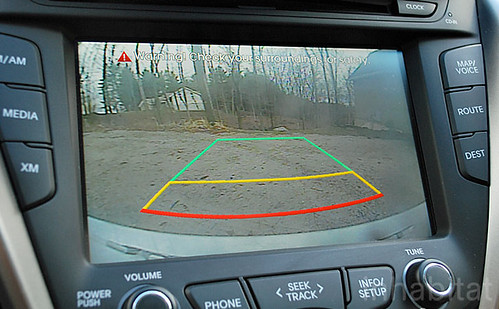
11. **Hyundai Veloster**The Hyundai Veloster stands out with its distinctive styling, unique three-door configuration, and characteristically responsive handling, initially presenting itself as an appealing, sporty compact. Yet, beneath this attractive façade, the vehicle has been marred by a series of significant and difficult-to-ignore problems that have led to considerable owner regret. Its aesthetic appeal unfortunately did not translate into consistent mechanical dependability.
The Hyundai Veloster stands out with its distinctive styling, unique three-door configuration, and characteristically responsive handling, initially presenting itself as an appealing, sporty compact. Yet, beneath this attractive façade, the vehicle has been marred by a series of significant and difficult-to-ignore problems that have led to considerable owner regret. Its aesthetic appeal unfortunately did not translate into consistent mechanical dependability.
Central among the Veloster’s shortcomings are persistent engine issues, some of which have unfortunately progressed to catastrophic failure. Such severe engine problems represent a major financial burden and safety concern for owners, fundamentally undermining trust in the vehicle’s long-term reliability. A car’s engine is its heart, and significant failures here are a red flag.
Further adding to the list of complaints is the Veloster’s dual-clutch transmission, which has been cited for its own set of issues. Owners have reported instances of delayed acceleration, noticeable slipping between gears, and jerky shifts. These transmission faults not only detract from the driving pleasure but also raise serious questions about the powertrain’s refinement and durability. As if these weren’t enough, the Veloster also experienced problems with its suspension and steering systems, pointing to a broader lack of engineering robustness.
Car Model Information: 2013 Hyundai Veloster Base
Name: Hyundai Veloster
Manufacturer: Hyundai Motor Company
Production: 2011–2022
Class: Sport compact car
Layout: Front-engine, front-wheel-drive layout
BodyStyle: hatchback
Predecessor: Hyundai Tiburon
ModelYears: 2012–2022
Assembly: Ulsan
Categories: All Wikipedia articles in need of updating, All articles with unsourced statements, Articles containing Korean-language text, Articles with short description, Articles with unsourced statements from May 2018
Summary: The Hyundai Veloster (Korean: 현대 벨로스터, romanized: Hyeondae Belloseuteo) is a compact car first produced in 2011 by Hyundai, with sales beginning in South Korea on March 10, 2011, and in Canada and the United States since the fall of 2011. In South Korea, it was marketed under Hyundai’s ‘Premium Youth Lab’. It was unveiled on January 10, 2011, at the Detroit Auto Show, and fills the void left when Hyundai discontinued the Hyundai Tiburon after the 2008 model year.
The car differs from most other hatchbacks with its asymmetrical door configuration, featuring one large door on the driver side and two smaller doors on the passenger side. This configuration is more common on commercial vehicles and minivans.
Get more information about: Hyundai Veloster
Buying a high-performing used car >>>
Brand: Hyundai Model: Veloster
Price: $9,991 Mileage: 73,577 mi.
Read more about: Beyond the Hype: The 15 Cars and Brands Owners Consistently Regret Buying
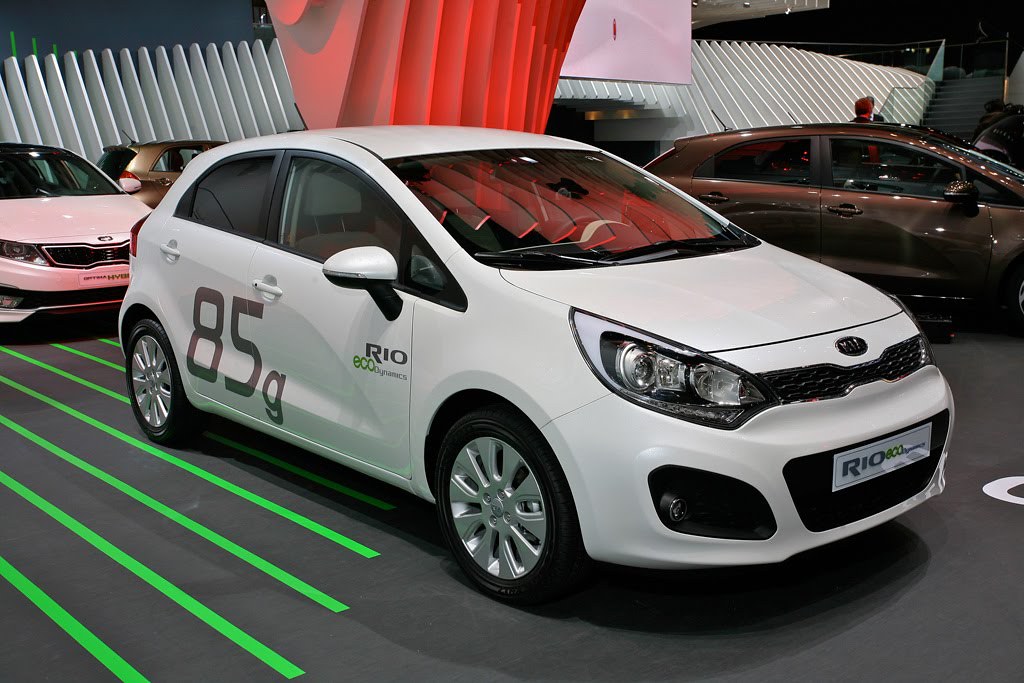
12. **Kia Rio**The Kia Rio, often lauded for its affordability and commendable fuel efficiency, has regrettably accumulated its share of buyer’s remorse among owners. While these two attributes can be compelling for budget-conscious consumers, they are frequently overshadowed by a more prominent reputation for persistent mechanical issues, particularly concerning its engine. This creates a significant trade-off in the ownership experience.
Among the most common engine-related complaints are instances of rough idling and misfires. These symptoms typically indicate underlying problems with vital components such as the spark plugs or ignition coils. Such issues, while sometimes manageable, often lead to increased maintenance costs and disrupt the smooth operation expected from a modern vehicle, making for an unreliable daily driver.
Beyond mechanical concerns, owners of the Kia Rio also frequently express dissatisfaction with the vehicle’s interior. Specifically, there are widespread complaints regarding the cheap quality of the cabin materials, which detract from the overall perceived value and comfort. Coupled with general comfort issues, these interior shortcomings contribute to an ownership experience that falls short of expectations, despite the car’s economical price point.
Car Model Information: 2023 Kia Rio S
Name: Kia Rio
Caption: Fourth generation Kia Rio
Manufacturer: Kia
Aka: Kia Pride (2005–2017),Kia K2 (China; 2011–2020)
Production: November 1999 – December 2023
ModelYears: 2001–2023 (North America)
BodyStyle: hatchback
Class: Subcompact car
Layout: Front-engine, front-wheel-drive layout
Predecessor: Kia Pride,Kia Avella
Successor: Kia K3 (BL7),Kia Soluto
Categories: 2000s cars, 2010s cars, Articles containing Korean-language text, Articles with short description, CS1 Croatian-language sources (hr)
Summary: The Kia Rio (Korean: 기아 리오) is a subcompact car manufactured by Kia from 1999 to 2023. Body styles have included a three and five-door hatchback and four-door sedan, equipped with inline-four gasoline and diesel engines, and front-wheel drive.
The Rio replaced the first generation Pride—a rebadged version of the Ford Festiva—and the Avella, a subcompact sold as a Ford in some markets. A second generation was introduced in 2005 in Europe and in 2006 in North America, sharing its platform with the Hyundai Accent, a subcompact manufactured by its sister Hyundai Motor Company in South Korea.
In August 2023, the K3 was introduced as its successor in several markets such as Mexico and the GCC countries.
Get more information about: Kia Rio
Buying a high-performing used car >>>
Brand: Kia Model: Rio
Price: $16,385 Mileage: 22,509 mi.
Read more about: Buyer Beware: 12 Cars That Will Cost You a Fortune Before You Hit 50,000 Miles
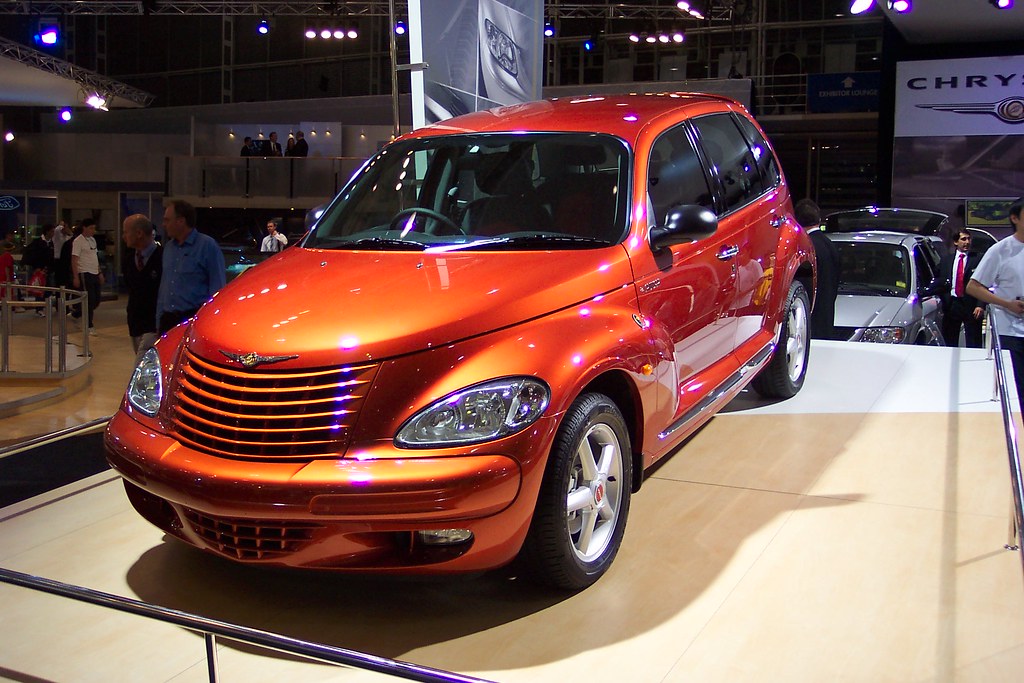
13. **Chrysler PT Cruiser**The Chrysler PT Cruiser is a vehicle that has always elicited strong opinions regarding its distinctive retro styling, with many either loving or vehemently disliking its unique aesthetic. However, the visual polarizing effect is far from the only aspect drawing criticism; beneath its unconventional exterior, the PT Cruiser has been plagued by a multitude of deep-seated mechanical and electrical problems that leave owners with significant regrets.
The engine of the PT Cruiser has been a particular source of frustration, experiencing a gamut of issues ranging from unexpected stalling and persistently rough idling to severe overheating problems. Critically, reports of head gasket failure are common, which represents a major and often expensive repair. Such widespread engine issues fundamentally compromise the vehicle’s reliability and its ability to provide consistent transportation.
In addition to the extensive engine troubles, the PT Cruiser also faced considerable problems with its transmission and electrical systems. These vital components, when malfunctioning, can lead to unpredictable driving behavior and a host of frustrating operational glitches. The accumulation of these diverse and serious defects across multiple critical systems made the PT Cruiser a challenging and often costly vehicle to own, contributing heavily to buyer dissatisfaction.
Car Model Information: 2025 Genesis GV80 3.5T
Name: Chrysler PT Cruiser
Manufacturer: Chrysler
ModelCode: PT,PG
Production: 2000–2010
ModelYears: 2001–2010
Assembly: Toluca, Mexico State
Designer: Bryan Nesbitt
Class: Compact car
BodyStyle: convertible
Platform: Chrysler PT platform
Related: Dodge SRT4,Dodge Neon
Predecessor: Dodge Neon
Successor: Lancia Delta#Third generation
Layout: Front-engine, front-wheel-drive layout
Engine: ubl
Transmission: Ultradrive#40TE
Wheelbase: 103 in
Abbr: on
Length: 168.8 in
Width: 67.1 in
Height: 63 in
Weight: 3123 lb
Categories: 2010s cars, All articles with unsourced statements, Articles with short description, Articles with unsourced statements from March 2018, Cars discontinued in 2010
Summary: The Chrysler PT Cruiser is a compact car that was built by the American company Chrysler from 2001 until 2010. Introduced as a five-door hatchback wagon, a two-door convertible variant was also made from 2005 until 2008.
Originally planned as a Plymouth model, the PT Cruiser was ultimately marketed as a Chrysler when Plymouth was discontinued. Intended to invoke 1930s aesthetics, the exterior of the PT Cruiser was designed by Bryan Nesbitt. The model received an intermediate facelift for the 2006 model year. Interior packaging was noted for its high roof, high h-point seating, and flexible cargo and passenger configurations enabled by a multi-level rear cargo shelf and rear seats a user could fold, tumble, or remove.
The PT Cruiser was produced in Mexico and Austria at the Toluca Car Assembly and Eurostar Automobilwerk factories respectively. By the end of production in July 2010, worldwide production had reached 1.35 million.
In its nameplate, PT stands for “Personal Transport” or “Personal Transportation”. PT was the PT Cruiser’s product code for the Mexican-made units.
Get more information about: Chrysler PT Cruiser
Buying a high-performing used car >>>
Brand: Chrysler Model: PT Cruiser
Price: $63,683 Mileage: 5,413 mi.
Read more about: Buyer Beware: 14 Cars Notorious for Breaking Down Prematurely, Especially After 100,000 Miles
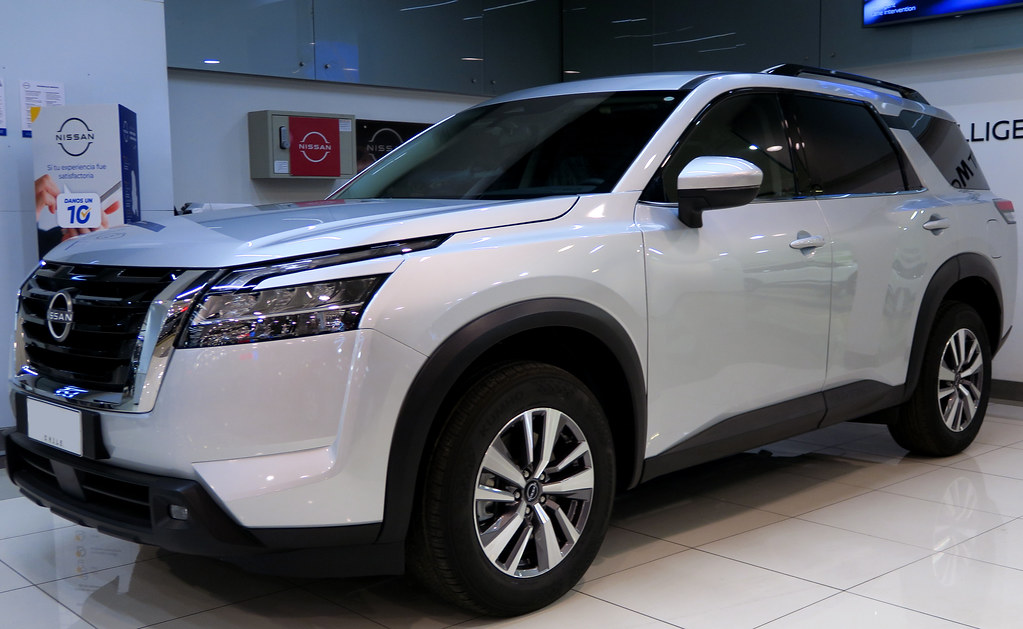
14. **Nissan Pathfinder**The Nissan Pathfinder, despite its long-standing presence and popularity as an SUV, has unfortunately become synonymous with a range of recurring problems that consistently lead owners to regret their purchase. As a vehicle often chosen for its capacity and perceived robustness, its widespread reliability issues are particularly disheartening for buyers.
A significant point of contention among Pathfinder owners is, once again, the continuously variable transmission (CVT). This problematic transmission type has been a frequent source of issues, with owners reporting rough shifting, noticeable shuddering during operation, and even episodes of overheating. These transmission defects severely impact the driving experience and raise serious questions about the vehicle’s long-term durability.
To the considerable frustration of some Nissan Pathfinder owners, these transmission problems have occasionally escalated to the point where a complete replacement of the unit becomes necessary. Such a major and expensive repair underscores the severity of the CVT’s inherent flaws. Furthermore, the Pathfinder has also been cited for engine issues and fuel system problems, adding to the extensive list of frustrations for its owners and reinforcing its reputation as a vehicle prone to significant operational concerns.
**Learning From Others’ Lessons to Drive Smarter**
Our journey through these fourteen vehicles, from the initial seven problematic models to this latest batch, serves as a stark reminder: the automotive market, while brimming with choices, also harbors pitfalls. The decision to purchase a car is a substantial financial commitment, and it profoundly impacts daily life. While no vehicle is entirely immune to issues, the models highlighted here consistently present challenges that often overshadow their initial appeal or perceived value.
The insights gathered from extensive owner feedback, expert analyses, and documented reliability concerns underscore a crucial lesson: thorough research is indispensable. Paying too much to choose too poorly is a common trap, one that can be easily avoided by learning from the experiences of others. Whether it’s persistent transmission woes, critical engine failures, electrical system glitches, or design compromises, these recurring patterns of regret offer invaluable warnings.
Car Model Information: 2023 Nissan Pathfinder Platinum
Name: Nissan Pathfinder
Caption: 2022 Nissan Pathfinder Platinum 4WD (R53, US)
Manufacturer: Nissan
Production: 1985–present
ModelYears: unbulleted list
Layout: unbulleted list
Class: unbulleted list
Chassis: unbulleted list
Predecessor: unbulleted list
Successor: unbulleted list
Categories: 1990s cars, 2000s cars, 2010s cars, 2020s cars, All-wheel-drive vehicles
Summary: The Nissan Pathfinder is a range of sport utility vehicles manufactured by Nissan since 1985. Until the third-generation model, the Pathfinder is based on Nissan’s compact pickup truck platform which it shares with the Navara/Frontier.
The Pathfinder was marketed as the Nissan Terrano (Japanese: 日産・テラノ, Hepburn: Nissan Terano) outside North America. Beginning in 2004, the vehicles were marketed globally as the Pathfinder.
In 2012, the R52 series Pathfinder was released as a three-row crossover SUV based on the unibody Nissan D platform, moving away from the body-on-frame chassis format. The role of a mid-size body-on-frame SUV in Nissan’s global lineup was passed to the Terra/X-Terra, which was released in 2018 and based on the D23 series Navara.
Get more information about: Nissan Pathfinder
Buying a high-performing used car >>>
Brand: Nissan Model: Pathfinder
Price: $37,772 Mileage: 46,270 mi.
Read more about: The Ultimate Guide: 15 Crossover SUVs Engineered to Surpass 270,000 Kilometers Without Major Breakdowns
Ultimately, our aim is to empower you with the knowledge to navigate the complex world of car buying with confidence. By understanding the common pitfalls associated with these particular models, you can make more informed decisions, sidestepping potential “migraine headaches on wheels.” Choose wisely, because your driving satisfaction, and your wallet, will thank you for it.

